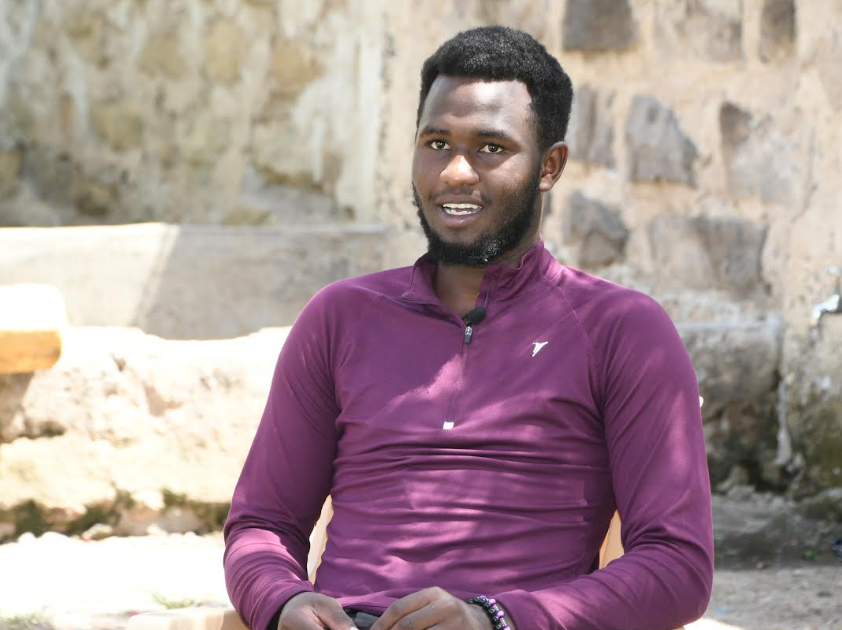At just the age of 21, Elvis Gachigi could almost be declared a street veteran. He intermittently spent eight years without a roof over his head.
“I lived at the Globe roundabout,” he says. As he awaits to join university, he now lives with his mother in Mwihoko, Kiambu. He has two siblings—an elder brother and a younger sister. His brother is still away on the streets.
Gachigi’s experience is different from many others. A mother and her little children hurdle together under an overpass road or bridge for warmth on a chilly, rainy night. Their beddings are just a few tattered blankets and rags spread on slices of carton. No fixed abode exists for such a family.
Elsewhere, a lone boy slips into a culvert for protection from what he perceives as danger. He hopes that rain water won’t flush him out. But even if it were to happen, his resolute determination to live will keep him fighting for survival. The boy’s peers might be sheltering in cardboard shacks. At a tender age of childhood, Gachigi saw such conditions.

Photo by Kibet Cheptumo/KNA
The disquieting stereotype, stinky, mucky, no property and no identity may be just how passersby commonly view those who have no shelter. The homeless might even be considered as dangerous, triggering fear and uneasiness when glanced at.
Inevitable circumstances might have led to the upsurge of street families living in squalid passages, some of which led to sewers, dumpsites or polluted rivers. Some of the homeless occupy dilapidated or abandoned buildings.
The plight of homeless families keeps replaying in practically all cities and major towns in the country. Dysfunctional families, poverty, spousal and child abuse, among other factors are responsible for spewing family members onto the streets. Nairobi, Mombasa and Nakuru are leading the pack of the most affected counties.
When Gachigi was about five years old, his father died. His family faced a multitude of conflicts related to his father’s farm. The hostile environment forced his brother to be the first in his family to seek a relatively ‘peaceful’ alternative. That was partially on the streets. Gachigi would join him to scavenge for food especially at the village market.
“We would eat there and then go home,” Gachigi says. Going to school had no place in their young minds. Curiosity set in for the two boys. “We decided to go to Nairobi to see how life was,” he says. His brother wanted to squeeze himself somewhere in Mlango Kubwa. But Gachigi disliked the idea. A fight ensued between the two siblings. They parted ways.
ARRESTS
Gachigi faced several arrests while living on the streets. He ended up detained at different police stations and children’s remand in Lower Kabete. His mother’s anxiety forced her to mount a search for him. “She found me through an announcement placed over the radio,” he says.
Apparently, his brother had been traced earlier and been taken back to their mother. But, when Gachigi arrived back home, his brother had left for the streets again. His sister stuck with their mother, despite the destitution their family faced.
Perhaps due to being hardened by the street life that Gachigi faced, he had a frosty relationship with his mother. “I started fighting with my mom and I left,” he says. Trouble kept pursuing him. “I was arrested again and taken to a police station.”
Every time he would be arrested, his mum, Priscilla Mwihaki, knew where to find him. Mum and son would head home. The preceding sequences replayed yet again! In retrospect, he had spent eight years in different children ‘detention’ facilities.
Mwihaki would go to the streets at dawn around the Globe Roundabout to physically search for Gachigi. She got him two times in this manner.
Mwihaki recounts how rocky her marriage was while she and her husband were living in Banana. “The marriage was so toxic, that I kept moving out and coming back,” she says.
Her efforts to take Gachigi to school seemed to bear little fruit. He stagnated in class one for three years due to dropping out frequently.
But during Gachigi’s third year in class one, he somehow settled. He emerged tops. His mother left for Saudi Arabia to look for a job to care for her family, but she came back after two years. Due to lack of parental guidance, “I was independent,” Gachigi says, “I did what I wanted.”
Bad habits almost seeped into his desires. He experimented with smoking and inhalation of petrol. Thankfully, he wasn’t hooked to these substances.
The World Economic Forum reported in 2021 that 150 million people were homeless worldwide. It’s difficult to keep track of the number of street families on the streets since the real scope of the problem keeps fluctuating. Movement from place to place exacerbates the situation. According to the 2018 Kenya National Census of street families, there were 46,396 street families countrywide.
RESCUE CENTRES
The Street Families Rehabilitation Trust Fund (SFRTF) is mandated to coordinate the rehabilitation of street families. It does so in partnership with almost 30 mostly charitable children’s institutions strewn all over the country. These include Familia ya Ufariji in Nairobi, Glad’s House in Mombasa, Kusitawi Village Children’s Home in Kiambu, Nyumba ya Tumaini in Kajiado, among others. However, it’s sometimes difficult for a fraction of street dwellers to be confined in such institutions. They prefer street life instead.
The Chairperson of the SFRTF Mary Wambui says, “As a mother, it’s very painful to see children roaming about on the streets. They shouldn’t be treated like criminals.”
She’s pleading with the government to allocate more funds to be ploughed into efforts to curb families from pouring onto the streets. “We need to have a country that is free of street families,” Wambui says. “But that’s a daunting task because some of the street children are from the neighbouring countries.”

Photo by William Inganga/KNA
“We are in the process of developing a Street Families Information Management System (SFIMS),” says the Trust Fund’s CEO, Caroline Towett. “This is at the very last stage. It’s likely to be launched before June.”
Several sources list many factors that contribute to the proliferation of street families or individuals in Kenya. Job loss, debt and dysfunctional families, are just a few. Many homeless people have mental and physical problems. Towett also attributes the existence of street families to how easily many Kenyans give out money when street dwellers beg for alms.
The centres that care for rescued youngsters offer services aimed at assisting individuals and families to break out of the state of homelessness. One help that might arise is reestablishing links with family, or the chance to learn basic skills.
“We usually encourage them to nurture the talents of these young people,” Towett says, “So that they can really utilize that talent even to develop themselves.”
The UN Declaration of the Rights of the Child includes the right to full opportunity for play and recreation and equal opportunity to free and compulsory education, to enable the child to develop his individual abilities and to become a useful member of society. Others are the right to adequate nutrition, housing, and medical services. If handicapped physically, mentally, or socially, they have the right to special care. The right to develop full potential in conditions of freedom and dignity also feature.
While Gachigi found his footing in primary school, he was being sheltered at Nyumba ya Ufariji in Kahawa West. “It’s the foundation of my life,” he says.
REHABILITATION JOURNEY
He eventually completed his primary education. He scored 402 marks and was admitted to Murang’a High School. He applied for a scholarship but was not successful. A well-wisher from a local bank offered to educate him for four years.
“I got a B+,” he says. “I want to join JKUAT to study mechatronics. This is computer science, mechanical and electrical engineering combined.”
“My son’s dream nearly died. As a mother I didn’t lose hope of helping him to realize his dream, even with the difficult circumstances we were going through,” Mwihaki says.
The SFRTF Chief Executive Officer, Caroline Towett, says, “We undertake the rescuing of these people from the streets. We do this in a humane manner.”
Social workers are actively involved. They talk to the street dwellers aiming at persuading them to leave the streets. If they accept, then their rehabilitation journey begins.
“Some of these people have been on the streets for long and have been using drugs, “Towett says. “They need detoxification and behavioral change.”
Apart from rescuing and rehabilitation, SFRTF is also geared toward the reintegration and resocialization of the families or individuals so that rejoining their families is eased. As these processes are undertaken, prevention of families ending up on the streets is targeted too.
By William Inganga and Wangari Ndirangu


